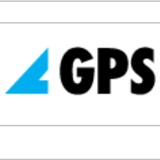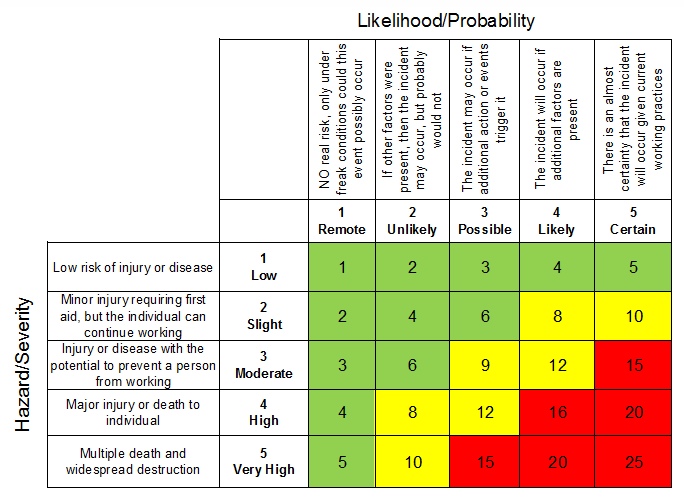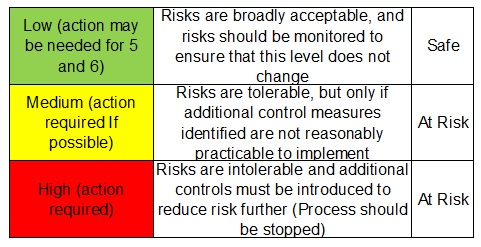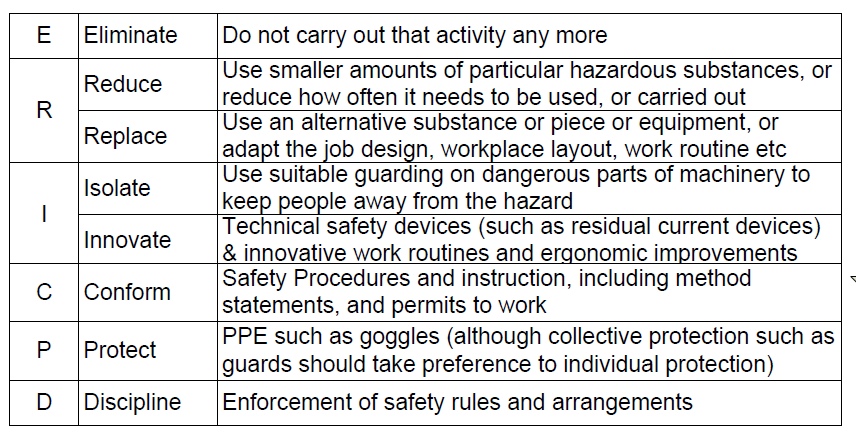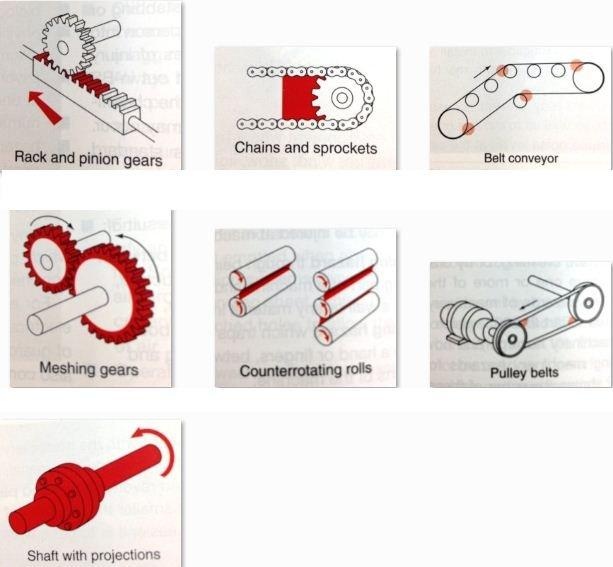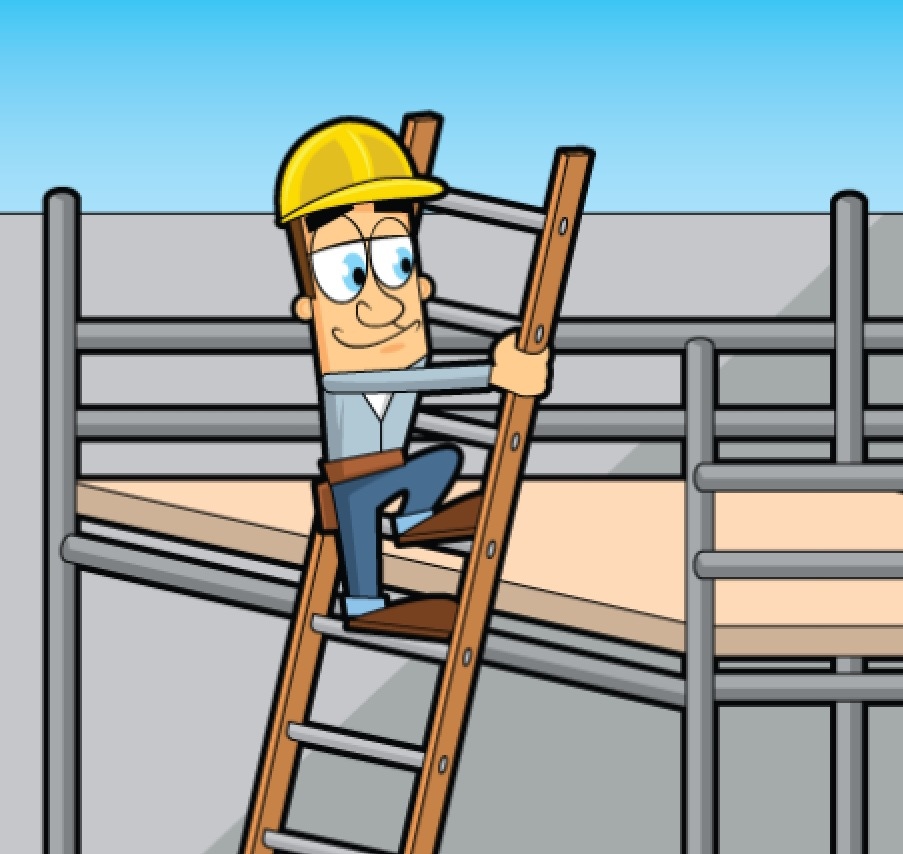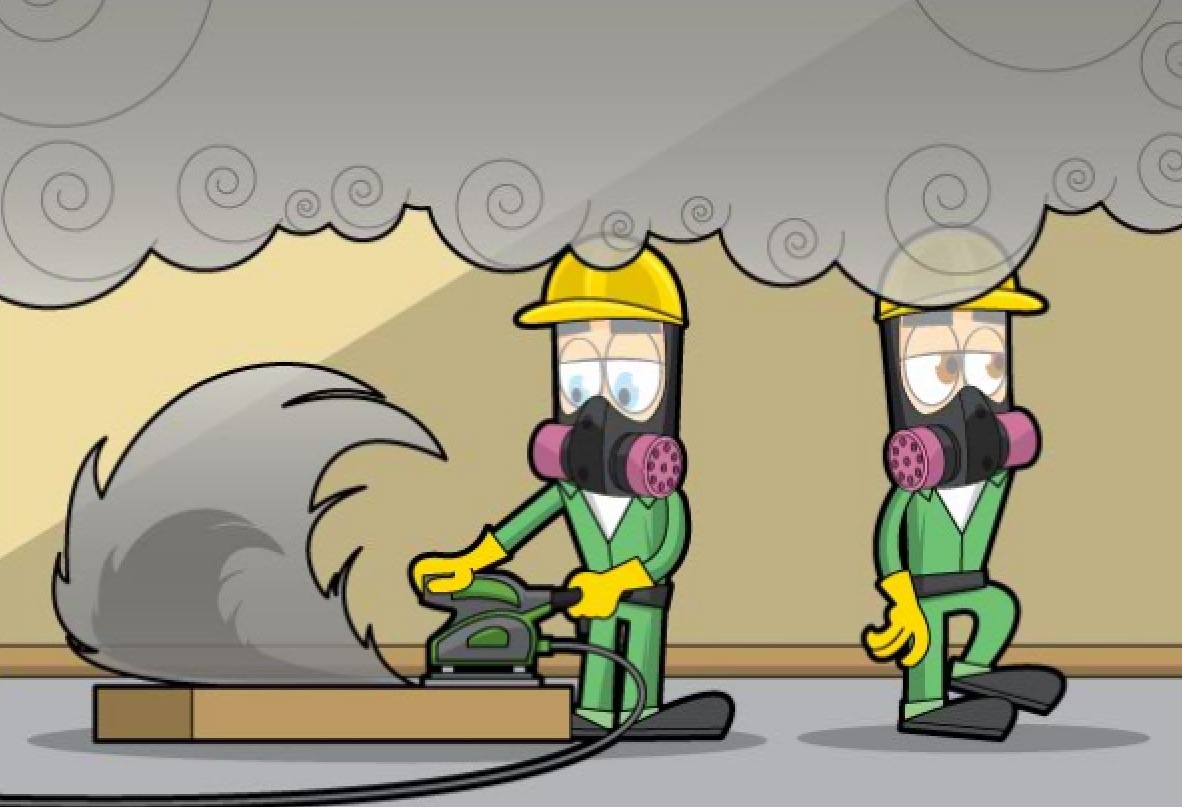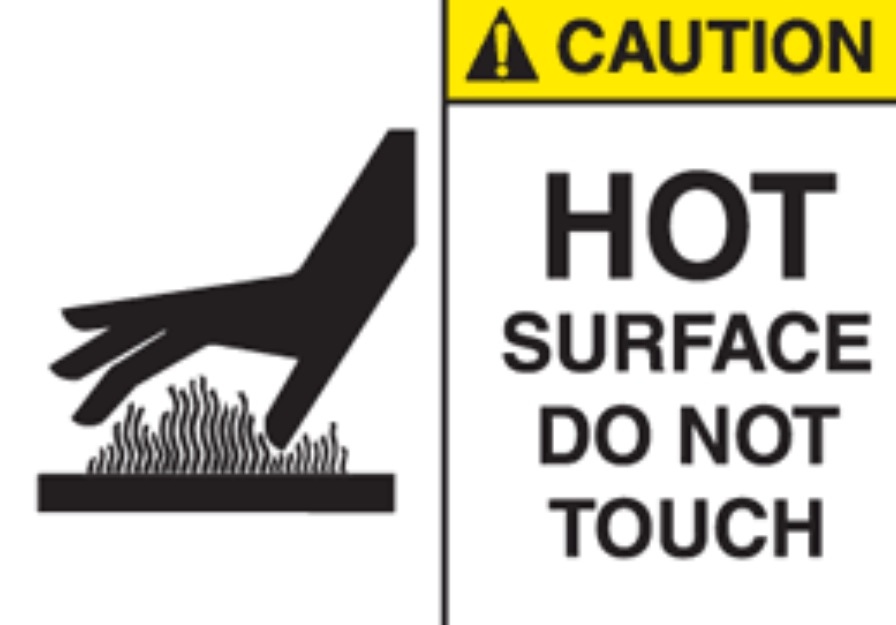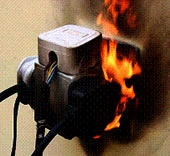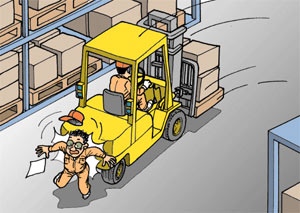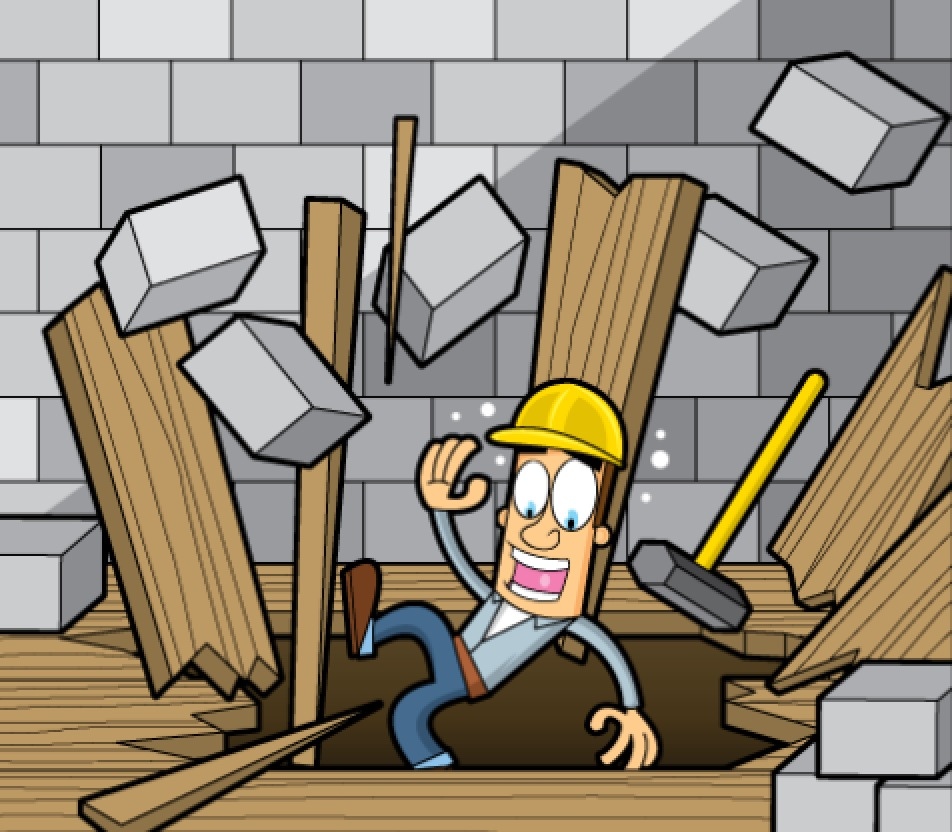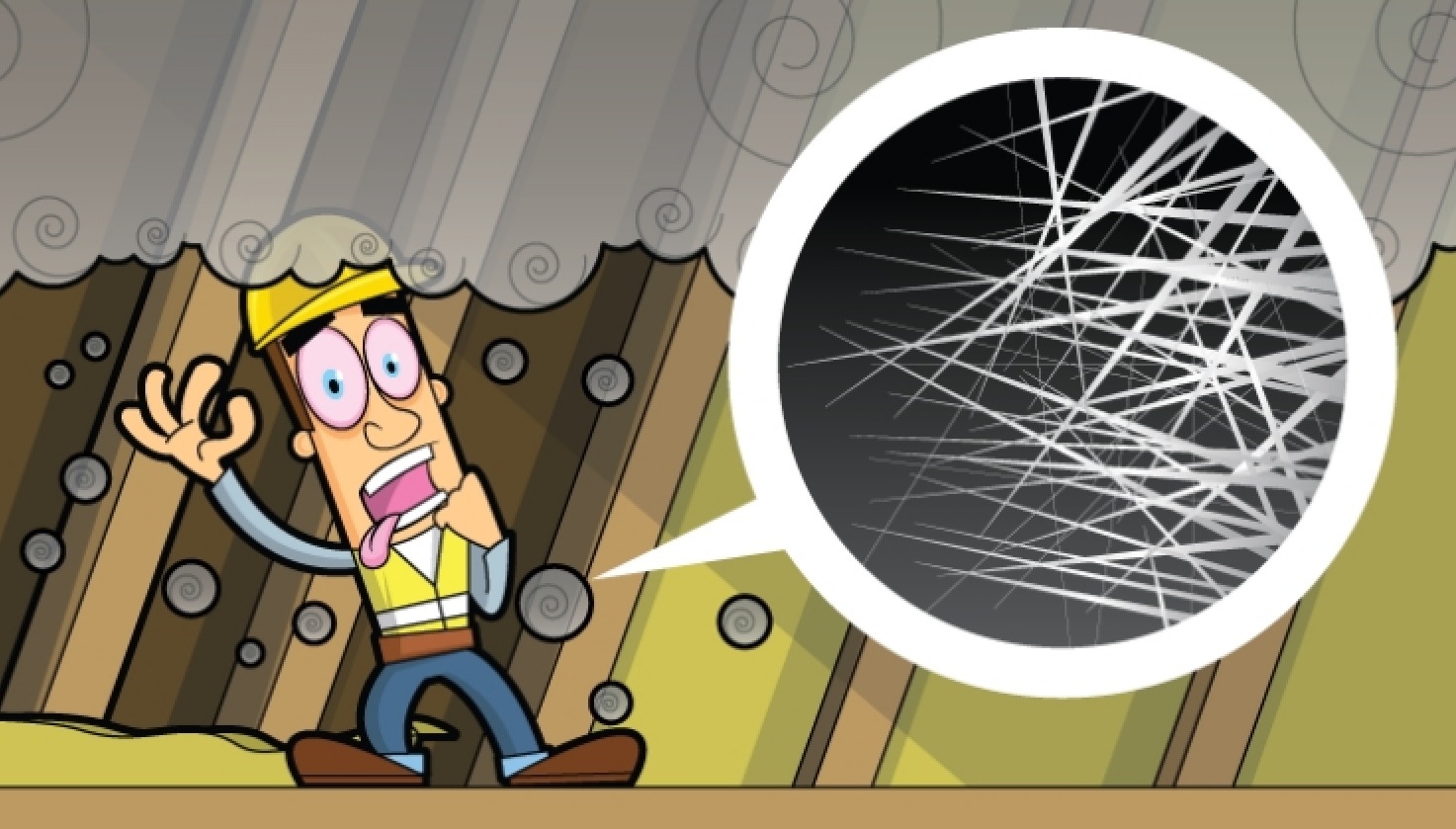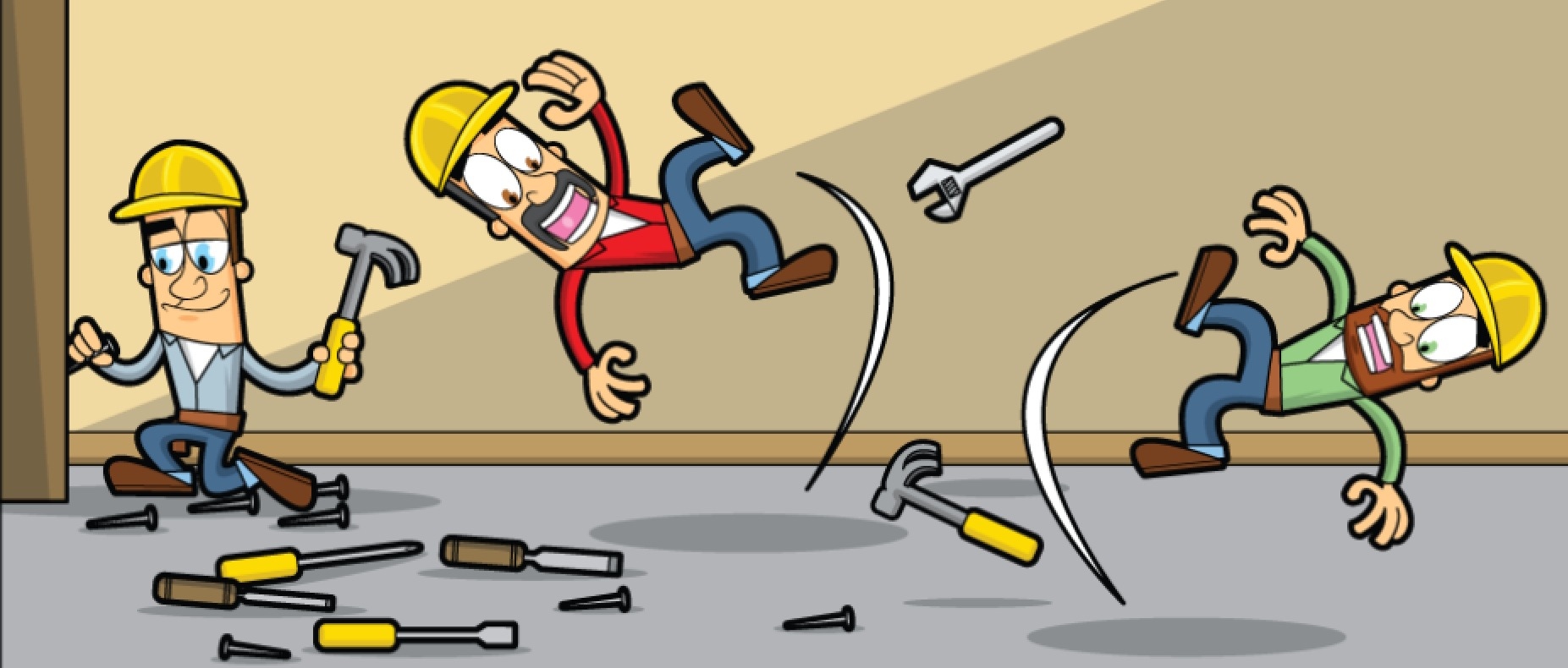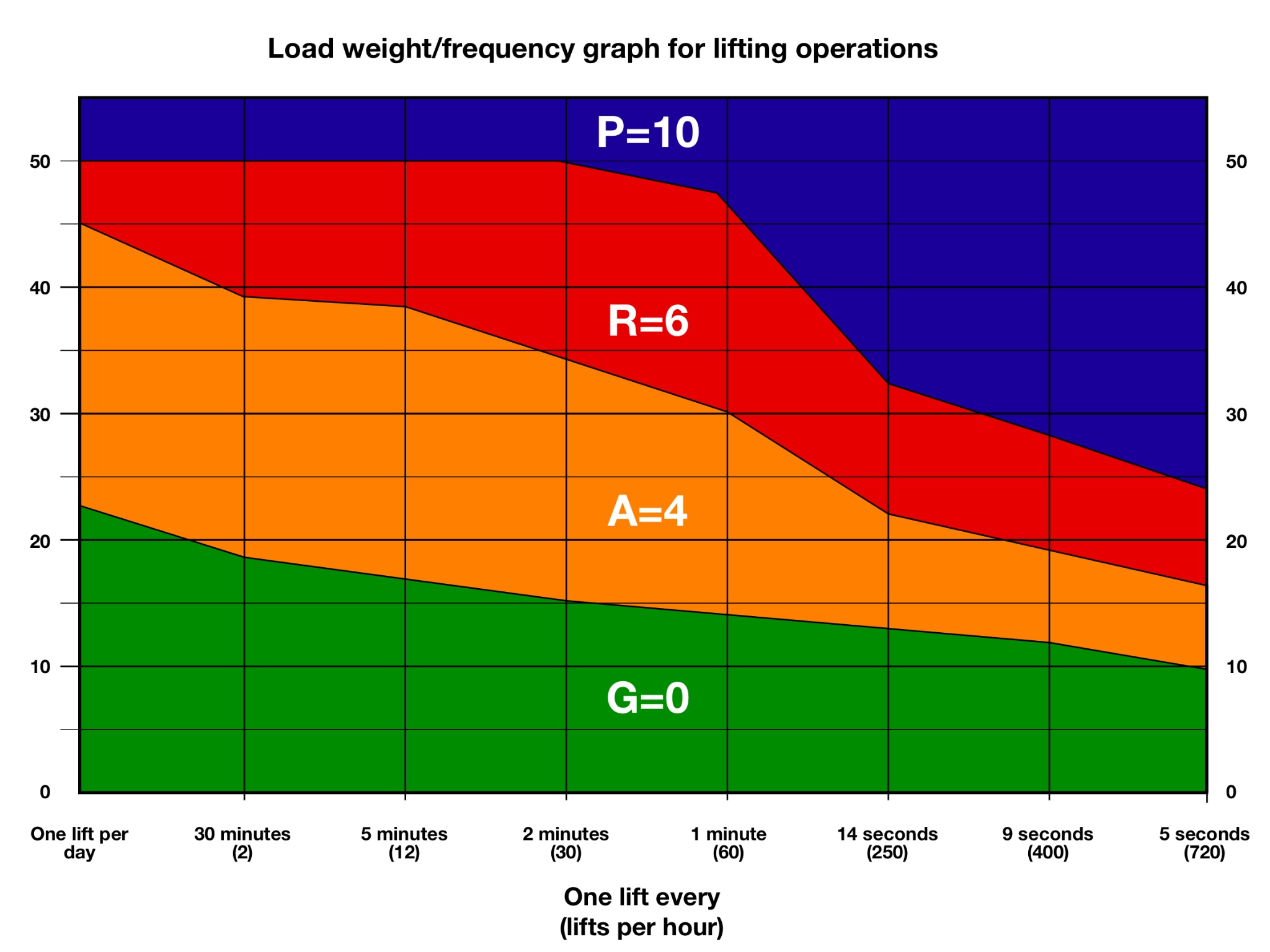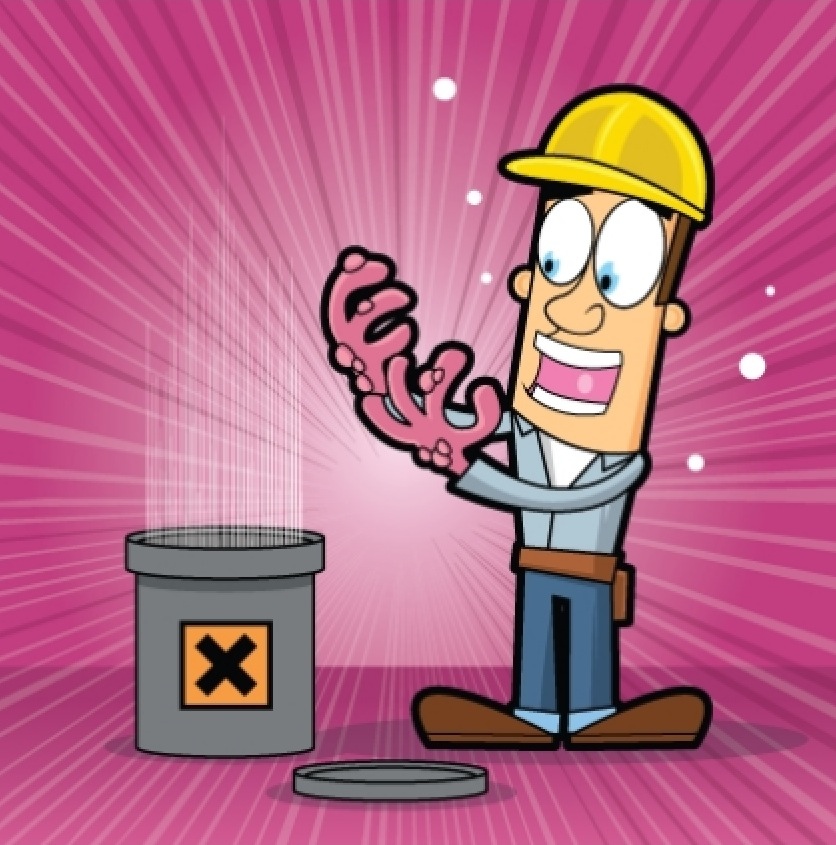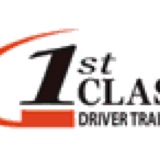Information
-
Site conducted
-
Assessment Number (Zone-G-Sequence Number)
-
Enter the Zone, type of assessment and next number in sequence from risk assessment index for the assessment type
-
Description of area/cell/process being assessed
-
Site/Department
-
Conducted by:
-
Conducted on
-
Review Period
-
Review period guidance:
Lower frequencies (generally 1 year) should be set for new processes which are subject to change or where there is limited experience
Risk assessment should be reviewed where there is a change in equipment, people or process. If equipment is used for a different purpose, or is moved, the process should be re-assessed.
Please report any errors, omissions or feedback on this template to andy.harrington@me.com
Latest revision:
remove extraneous images from guidance notes
Change risk matrix from 3x3 to 5x5
General Help
-
Risk priority matrix:
If the hazard is present, answer "Yes" and if not present, answer "No"
Then rate the hazard once scored by considering the remaining risk exposure after the mitigating and controlling factors of the existing control measures are taken into account (residual risk).
If residual risk is less than 5 then you can select "safe" in the "rate the hazard" section (If the hazard is present, then you must select "Safe" or "At Risk" for each hazard category)
Take photographs or sketch to help clarify the hazard (or indeed the lack of hazard) as required in each section. -
Risk actions and category:
-
Ensure that the hierarchy of risk control is applied to actions:
The lower the number the more effective the action!
Equipment and Mechanical Hazards
1. Hazards relating to rotating parts of machinery (entanglement, friction burns, or being dragged into rotating parts of machinery)
-
Guidance:
Look for the possibility of being dragged into rotating parts of machinery by entanglement with loose clothing, long hair etc; for example conveyers, rotating chucks, or spindles.
Also look at grinders or sanders which could cause friction burns if contact is made.
Check also for exposed gears, such as rack and pinions, which could drag the operator into the area where the gears mesh. -
Pictorial guidance:
-
Are there hazards related to being drawn into the machine by moving or rotating parts?
-
Who might be harmed?
- Operator
- Technician
- Maintenance
- Visitor
- Driver
- Warehouse Operative
- Other
-
You selected other, please specify:
-
How might they be harmed?
-
What controls already exist?
-
What is the likelihood of harm?
-
What is the severity?
-
Total Score of likelihood x severity
- 1 - No Action is required
- 2 - No Action is required
- 3 - No action is required
- 4 - No action is required
- 5 - Action to improve should be considered
- 6 - Action to improve should be considered
- 8 - Action required if reasonably practicable
- 9 - Action required if reasonably practicable
- 10 - Action required if reasonably practicable
- 12 - Action required if reasonably practicable
- 15 - STOP PROCESS - Action required
- 16 - STOP PROCESS - Action required
- 20 - STOP PROCESS - Action required
- 25 - STOP PROCESS - Action required
-
Rate the Hazard (Comment mandatory for scores of 5 and above)
-
Action(s) required:
you must also identify who is responsible for the action(s)
Action(s)
-
Action
-
Responsibility:
2. Hazards relating to any hot parts of machinery (or hot parts made by the machine)
-
Guidance:
Is there a possibility of being burned from hot parts on the machine or hot parts made by the machine (for example machine barrels, nozzles, bag sealers, molten material etc)?
Include in this things like swarf from machining, purge from moulding machines etc -
Are there hazards related to being burnt by hot parts of the machine or what it produces?
-
Who might be harmed?
- Operator
- Technician
- Maintenance
- Visitor
- Driver
- Warehouse Operative
- Other
-
You selected other, please specify:
-
How might they be harmed?
-
What controls already exist?
-
What is the likelihood of harm?
-
What is the severity?
-
Total Score of likelihood x severity
- 1 - No Action is required
- 2 - No Action is required
- 3 - No action is required
- 4 - No action is required
- 5 - Action to improve should be considered
- 6 - Action to improve should be considered
- 8 - Action required if reasonably practicable
- 9 - Action required if reasonably practicable
- 10 - Action required if reasonably practicable
- 12 - Action required if reasonably practicable
- 15 - STOP PROCESS - Action required
- 16 - STOP PROCESS - Action required
- 20 - STOP PROCESS - Action required
- 25 - STOP PROCESS - Action required
-
Rate the Hazard (Comment mandatory for scores of 5 and above)
-
Action(s) required:
you must also identify who is responsible for the action(s)
Action(s)
-
Action
-
Responsibility:
3. Hazards relating to pinch points, shear points, crush between moving and/or fixed parts, points of impact or stab potential from sharp points
-
Guidance: Is there a possibility of being crushed by moving parts of the machine or being pinched/nipped, sheared by opposing moving parts, or being crushed against the wall by moving part.
Could anyone be impacted by moving parts or stabbed by them?
Look for the potential for injury from unguarded edges or corners on equipment -
Pictorial Guidance: -
Are there hazards related to being stabbed, crushed, sheared or impacted by any moving part of the machine?
-
Who might be harmed?
- Operator
- Technician
- Maintenance
- Visitor
- Driver
- Warehouse Operative
- Other
-
You selected other, please specify:
-
How might they be harmed?
-
What controls already exist?
-
What is the likelihood of harm?
-
What is the severity?
-
Total Score of likelihood x severity
- 1 - No Action is required
- 2 - No Action is required
- 3 - No action is required
- 4 - No action is required
- 5 - Action to improve should be considered
- 6 - Action to improve should be considered
- 8 - Action required if reasonably practicable
- 9 - Action required if reasonably practicable
- 10 - Action required if reasonably practicable
- 12 - Action required if reasonably practicable
- 15 - STOP PROCESS - Action required
- 16 - STOP PROCESS - Action required
- 20 - STOP PROCESS - Action required
- 25 - STOP PROCESS - Action required
-
Rate the Hazard (Comment mandatory for scores of 5 and above)
-
Action(s) required:
you must also identify who is responsible for the action(s)
Action(s)
-
Action
-
Responsibility:
4. Hazards related to equipment stability
-
Guidance:
All the equipment and parts of work equipment should be stabilised by clamping or otherwise secured for the purposes of of health and safety. Most machines used in a fixed position should be bolted or otherwise fastened down so that they do not move or rock during use. Mobile work equipment should be used within the limits of its stability (including the use of stabilisers as needed)
Check to see if equipment is top heavy, and could topple over. -
Are there hazards related to equipment stability? (risk of the equipment becoming unstable or toppling over)
-
Who might be harmed?
- Operator
- Technician
- Maintenance
- Visitor
- Driver
- Warehouse Operative
- Other
-
You selected other, please specify:
-
How might they be harmed?
-
What controls already exist?
-
What is the likelihood of harm?
-
What is the severity?
-
Total Score of likelihood x severity
- 1 - No Action is required
- 2 - No Action is required
- 3 - No action is required
- 4 - No action is required
- 5 - Action to improve should be considered
- 6 - Action to improve should be considered
- 8 - Action required if reasonably practicable
- 9 - Action required if reasonably practicable
- 10 - Action required if reasonably practicable
- 12 - Action required if reasonably practicable
- 15 - STOP PROCESS - Action required
- 16 - STOP PROCESS - Action required
- 20 - STOP PROCESS - Action required
- 25 - STOP PROCESS - Action required
-
Rate the Hazard (Comment mandatory for scores of 5 and above)
-
Action(s) required:
you must also identify who is responsible for the action(s)
Action(s)
-
Action
-
Responsibility:
5. Hazards relating to exposure to high-pressure fluids or compressed air or other high-pressure gases
-
Guidance:
Look for the possibility of skin or eye contact with high-pressure fluids or compressed air (skin or eye contact or debris from using an airline in the eye).
Compressed air, if applied to the skin, can cause air bubbles in the blood, which can be very dangerous, whereas oil or other fluid contact can cause problems with skin sensitisation and eye problems -
Are there hazards related to exposure to high-pressure fluids, or compressed air ?
-
Who might be harmed?
- Operator
- Technician
- Maintenance
- Visitor
- Driver
- Warehouse Operative
- Other
-
You selected other, please specify:
-
How might they be harmed?
-
What controls already exist?
-
What is the likelihood of harm?
-
What is the severity?
-
Total Score of likelihood x severity
- 1 - No Action is required
- 2 - No Action is required
- 3 - No action is required
- 4 - No action is required
- 5 - Action to improve should be considered
- 6 - Action to improve should be considered
- 8 - Action required if reasonably practicable
- 9 - Action required if reasonably practicable
- 10 - Action required if reasonably practicable
- 12 - Action required if reasonably practicable
- 15 - STOP PROCESS - Action required
- 16 - STOP PROCESS - Action required
- 20 - STOP PROCESS - Action required
- 25 - STOP PROCESS - Action required
-
Rate the Hazard (Comment mandatory for scores of 5 and above)
-
Action(s) required:
you must also identify who is responsible for the action(s)
Action(s)
-
Action
-
Responsibility:
6. Hazards relating to the potential for ejection of parts from the machine?
-
Guidance:
Is there potential for parts to be thrown out of the machine and hit the operator? For example, a lathe could throw the part out of the machine if not properly located in the chuck, or cutting equipment could eject parts when cut, or swarf, debris etc could be ejected from machine when in operation. Ejection of any substances should be noted in the assssment
Look also for the potential for parts or parts of the equipment rupturing or disintegrating during processing (for example grinding wheels can disintegrate if unbalanced or damaged) -
Are there hazards related to ejection of parts or debris from the machine?
-
Who might be harmed?
- Operator
- Technician
- Maintenance
- Visitor
- Driver
- Warehouse Operative
- Other
-
You selected other, please specify:
-
How might they be harmed?
-
What controls already exist?
-
What is the likelihood of harm?
-
What is the severity?
-
Total Score of likelihood x severity
- 1 - No Action is required
- 2 - No Action is required
- 3 - No action is required
- 4 - No action is required
- 5 - Action to improve should be considered
- 6 - Action to improve should be considered
- 8 - Action required if reasonably practicable
- 9 - Action required if reasonably practicable
- 10 - Action required if reasonably practicable
- 12 - Action required if reasonably practicable
- 15 - STOP PROCESS - Action required
- 16 - STOP PROCESS - Action required
- 20 - STOP PROCESS - Action required
- 25 - STOP PROCESS - Action required
-
Rate the Hazard (Comment mandatory for scores of 5 and above)
-
Action(s) required:
you must also identify who is responsible for the action(s)
Action(s)
-
Action
-
Responsibility:
7. Hazards relating to use of display screen equipment
-
Guidance:
Is display screen equipment, (e.g. a computer, terminal etc), in use for a significant part of the normal work by the operator? If yes, then identify the requirement to conduct a VDU assessment in the "additional assessments" section -
Are there hazards related to prolonged VDU use?
-
Who might be harmed?
- Operator
- Technician
- Maintenance
- Visitor
- Driver
- Warehouse Operative
- Other
-
You selected other, please specify:
-
How might they be harmed?
-
What controls already exist?
-
What is the likelihood of harm?
-
What is the severity?
-
Total Score of likelihood x severity
- 1 - No Action is required
- 2 - No Action is required
- 3 - No action is required
- 4 - No action is required
- 5 - Action to improve should be considered
- 6 - Action to improve should be considered
- 8 - Action required if reasonably practicable
- 9 - Action required if reasonably practicable
- 10 - Action required if reasonably practicable
- 12 - Action required if reasonably practicable
- 15 - STOP PROCESS - Action required
- 16 - STOP PROCESS - Action required
- 20 - STOP PROCESS - Action required
- 25 - STOP PROCESS - Action required
-
Rate the Hazard (Comment mandatory for scores of 5 and above)
-
Action(s) required:
you must also identify who is responsible for the action(s)
Action(s)
-
Action
-
Responsibility:
8. Hazards relating to use of hand tools
-
Guidance:
Hand tools (including battery-powered tools) used by the operator, must be in good condition, suitable for the task being carried out and used correctly.
Look for things like damaged handles (breaks in hammer handles, and, rounding of chisels ends for example), blunt cutting edges, and rounded spanners, sockets or Allen keys.
Pictorial Guidance: -
Are there hazards relating to use of hand tools (in good condition and suitable for the task)
-
Who might be harmed?
- Operator
- Technician
- Maintenance
- Visitor
- Driver
- Warehouse Operative
- Other
-
You selected other, please specify:
-
How might they be harmed?
-
What controls already exist?
-
What is the likelihood of harm?
-
What is the severity?
-
Total Score of likelihood x severity
- 1 - No Action is required
- 2 - No Action is required
- 3 - No action is required
- 4 - No action is required
- 5 - Action to improve should be considered
- 6 - Action to improve should be considered
- 8 - Action required if reasonably practicable
- 9 - Action required if reasonably practicable
- 10 - Action required if reasonably practicable
- 12 - Action required if reasonably practicable
- 15 - STOP PROCESS - Action required
- 16 - STOP PROCESS - Action required
- 20 - STOP PROCESS - Action required
- 25 - STOP PROCESS - Action required
-
Rate the Hazard (Comment mandatory for scores of 5 and above)
-
Action(s) required:
you must also identify who is responsible for the action(s)
Action(s)
-
Action
-
Responsibility:
9. Hazards relating to significant vibration when using machinery
-
Guidance:
Is there a risk of vibration (when using machinery or equipment) being transmitted to the operator?
For example, use of hammer drills, grinders etc for significant periods could cause the operator problems with limbs (e.g. work related disorders of the white finger)
Pictorial Guidance: -
Are there hazards relating to significant vibration being transmitted to the operator when equipment is in use?
-
Who might be harmed?
- Operator
- Technician
- Maintenance
- Visitor
- Driver
- Warehouse Operative
- Other
-
You selected other, please specify:
-
How might they be harmed?
-
What controls already exist?
-
What is the likelihood of harm?
-
What is the severity?
-
Total Score of likelihood x severity
- 1 - No Action is required
- 2 - No Action is required
- 3 - No action is required
- 4 - No action is required
- 5 - Action to improve should be considered
- 6 - Action to improve should be considered
- 8 - Action required if reasonably practicable
- 9 - Action required if reasonably practicable
- 10 - Action required if reasonably practicable
- 12 - Action required if reasonably practicable
- 15 - STOP PROCESS - Action required
- 16 - STOP PROCESS - Action required
- 20 - STOP PROCESS - Action required
- 25 - STOP PROCESS - Action required
-
Rate the Hazard (Comment mandatory for scores of 5 and above)
-
Action(s) required:
you must also identify who is responsible for the action(s)
Action(s)
-
Action
-
Responsibility:
10. Hazards relating to the use of lifting equipment
-
Guidance:
Check the lifting equipment in use is properly checked and certified, check that persons carrying out lifting are properly trained to do so, and check for any damage or issues with the lifting equipment being used.
Check that the lifting equipment being used is suitable for the task (proper lifting slings, or eyebolts, cranes being used within load capacity etc). Check handling equipment such as pallet trucks, manual handling aids etc also.
Check if Persons are working under suspended loads, structures or equipment -
Are there hazards relating to use of lifting equipment? (trained, equipment certified and in good condition)
-
Who might be harmed?
- Operator
- Technician
- Maintenance
- Visitor
- Driver
- Warehouse Operative
- Other
-
You selected other, please specify:
-
How might they be harmed?
-
What controls already exist?
-
What is the likelihood of harm?
-
What is the severity?
-
Total Score of likelihood x severity
- 1 - No Action is required
- 2 - No Action is required
- 3 - No action is required
- 4 - No action is required
- 5 - Action to improve should be considered
- 6 - Action to improve should be considered
- 8 - Action required if reasonably practicable
- 9 - Action required if reasonably practicable
- 10 - Action required if reasonably practicable
- 12 - Action required if reasonably practicable
- 15 - STOP PROCESS - Action required
- 16 - STOP PROCESS - Action required
- 20 - STOP PROCESS - Action required
- 25 - STOP PROCESS - Action required
-
Rate the Hazard (Comment mandatory for scores of 5 and above)
-
Action(s) required:
you must also identify who is responsible for the action(s)
Action(s)
-
Action
-
Responsibility:
11. Hazards relating to the use of access equipment
-
Guidance:
Check if any access equipment is certified appropriately and is in good condition (for example ladders, scissor lifts, scaffolding, platforms, mobile elevated work platforms etc) check for damage to ladder rungs, guards or supports. Is the equipment used suitable for the task being undertaken?
Pictorial Guidance: -
Are there hazards relating to use of access equipment? (good condition, suitably certified and properly used)
-
Who might be harmed?
- Operator
- Technician
- Maintenance
- Visitor
- Driver
- Warehouse Operative
- Other
-
You selected other, please specify:
-
How might they be harmed?
-
What controls already exist?
-
What is the likelihood of harm?
-
What is the severity?
-
Total Score of likelihood x severity
- 1 - No Action is required
- 2 - No Action is required
- 3 - No action is required
- 4 - No action is required
- 5 - Action to improve should be considered
- 6 - Action to improve should be considered
- 8 - Action required if reasonably practicable
- 9 - Action required if reasonably practicable
- 10 - Action required if reasonably practicable
- 12 - Action required if reasonably practicable
- 15 - STOP PROCESS - Action required
- 16 - STOP PROCESS - Action required
- 20 - STOP PROCESS - Action required
- 25 - STOP PROCESS - Action required
-
Rate the Hazard (Comment mandatory for scores of 5 and above)
-
Action(s) required:
you must also identify who is responsible for the action(s)
Action(s)
-
Action
-
Responsibility:
12. Hazards relating to emissions from the process or parts being produced or used
-
Guidance:
Check for fumes, dusts or other emissions from the process, including sharp byproducts, (for example pieces of wire cut-off), hot purge from purge backs during purging operations, parts being dropped causing slip or trip hazards (for example terminals being dropped or grease or oil being spilt on the floor)
Pictorial Guidance: -
For example swarf from a turning or machining operation
-
Are there hazards relating to emissions or by-products from the process?
-
Who might be harmed?
- Operator
- Technician
- Maintenance
- Visitor
- Driver
- Warehouse Operative
- Other
-
You selected other, please specify:
-
How might they be harmed?
-
What controls already exist?
-
What is the likelihood of harm?
-
What is the severity?
-
Total Score of likelihood x severity
- 1 - No Action is required
- 2 - No Action is required
- 3 - No action is required
- 4 - No action is required
- 5 - Action to improve should be considered
- 6 - Action to improve should be considered
- 8 - Action required if reasonably practicable
- 9 - Action required if reasonably practicable
- 10 - Action required if reasonably practicable
- 12 - Action required if reasonably practicable
- 15 - STOP PROCESS - Action required
- 16 - STOP PROCESS - Action required
- 20 - STOP PROCESS - Action required
- 25 - STOP PROCESS - Action required
-
Rate the Hazard (Comment mandatory for scores of 5 and above)
-
Action(s) required:
you must also identify who is responsible for the action(s)
Action(s)
-
Action
-
Responsibility:
13. Hazards related to inadequate markings
-
Guidance:
Check for warning signs which should be present to warn of particular hazards, for example hot surfaces, labelling of controls, labelling of pipework as to the contents etc
Pictorial Guidance: -
Are there hazards relating to inadequate marking?
-
Who might be harmed?
- Operator
- Technician
- Maintenance
- Visitor
- Driver
- Warehouse Operative
- Other
-
You selected other, please specify:
-
How might they be harmed?
-
What controls already exist?
-
What is the likelihood of harm?
-
What is the severity?
-
Total Score of likelihood x severity
- 1 - No Action is required
- 2 - No Action is required
- 3 - No action is required
- 4 - No action is required
- 5 - Action to improve should be considered
- 6 - Action to improve should be considered
- 8 - Action required if reasonably practicable
- 9 - Action required if reasonably practicable
- 10 - Action required if reasonably practicable
- 12 - Action required if reasonably practicable
- 15 - STOP PROCESS - Action required
- 16 - STOP PROCESS - Action required
- 20 - STOP PROCESS - Action required
- 25 - STOP PROCESS - Action required
-
Rate the Hazard (Comment mandatory for scores of 5 and above)
-
Action(s) required:
you must also identify who is responsible for the action(s)
Action(s)
-
Action
-
Responsibility:
People Hazards (Related to the Individual)
1. Hazards related to the individuals suitability to the work carried out
-
Guidance:
Look for possible issues with the need for excessive strength or height issues (e.g. cannot reach to operate machine properly).
Check for issues with young persons (younger than 18 years old), pregnancy (or nursing mothers) or issues with disability.
if either of these are applicable ensure that you identify this requirement in the additional assessment section -
Are there hazards relating to the capability of individuals working in the area? (Height, strength, dexterity etc)
-
Who might be harmed?
- Operator
- Technician
- Maintenance
- Visitor
- Driver
- Warehouse Operative
- Other
-
You selected other, please specify:
-
How might they be harmed?
-
What controls already exist?
-
What is the likelihood of harm?
-
What is the severity?
-
Total Score of likelihood x severity
- 1 - No Action is required
- 2 - No Action is required
- 3 - No action is required
- 4 - No action is required
- 5 - Action to improve should be considered
- 6 - Action to improve should be considered
- 8 - Action required if reasonably practicable
- 9 - Action required if reasonably practicable
- 10 - Action required if reasonably practicable
- 12 - Action required if reasonably practicable
- 15 - STOP PROCESS - Action required
- 16 - STOP PROCESS - Action required
- 20 - STOP PROCESS - Action required
- 25 - STOP PROCESS - Action required
-
Rate the Hazard (Comment mandatory for scores of 3 and above)
-
Action(s) required:
you must also identify who is responsible for the action(s)
Action(s)
-
Action
-
Responsibility:
2. Hazards related to the hours of work, or work rate
-
Guidance:
Does the operator work excessive hours, and do they have to keep up with a speedy process? (Is the process machine or operator led?). Do the operators have sufficient rest and recovery time between cycle? Do they have sufficient breaks? Normal shifts will normally be okay, but if the operators are working additional hours, then this should be considered. -
Are there hazards relating to long hours of work and/or rate of work involved?
-
Who might be harmed?
- Operator
- Technician
- Maintenance
- Visitor
- Driver
- Warehouse Operative
- Other
-
You selected other, please specify:
-
How might they be harmed?
-
What controls already exist?
-
What is the likelihood of harm?
-
What is the severity?
-
Total Score of likelihood x severity
- 1 - No Action is required
- 2 - No Action is required
- 3 - No action is required
- 4 - No action is required
- 5 - Action to improve should be considered
- 6 - Action to improve should be considered
- 8 - Action required if reasonably practicable
- 9 - Action required if reasonably practicable
- 10 - Action required if reasonably practicable
- 12 - Action required if reasonably practicable
- 15 - STOP PROCESS - Action required
- 16 - STOP PROCESS - Action required
- 20 - STOP PROCESS - Action required
- 25 - STOP PROCESS - Action required
-
Rate the Hazard (Comment mandatory for scores of 3 and above)
-
Action(s) required:
you must also identify who is responsible for the action(s)
Action(s)
-
Action
-
Responsibility:
3. Hazards related to the potential for violence from others
-
Guidance:
People such as customer facing employees, or employees dealing with members of the public, or possibly drivers, could be subject of violence from others. Employees manning the gate house or reception for example could possibly be subject to violence from visitors -
Are there hazards relating to the potential for violence from others?
-
Who might be harmed?
- Operator
- Technician
- Maintenance
- Visitor
- Driver
- Warehouse Operative
- Other
-
You selected other, please specify:
-
How might they be harmed?
-
What controls already exist?
-
What is the likelihood of harm?
-
What is the severity?
-
Total Score of likelihood x severity
- 1 - No Action is required
- 2 - No Action is required
- 3 - No action is required
- 4 - No action is required
- 5 - Action to improve should be considered
- 6 - Action to improve should be considered
- 8 - Action required if reasonably practicable
- 9 - Action required if reasonably practicable
- 10 - Action required if reasonably practicable
- 12 - Action required if reasonably practicable
- 15 - STOP PROCESS - Action required
- 16 - STOP PROCESS - Action required
- 20 - STOP PROCESS - Action required
- 25 - STOP PROCESS - Action required
-
Rate the Hazard (Comment mandatory for scores of 3 and above)
-
Action(s) required:
you must also identify who is responsible for the action(s)
Action(s)
-
Action
-
Responsibility:
4. Hazards related to behaviour
-
Guidance:
Look for evidence of not wearing PPE, bypassing guards, poor practice such as cutting towards themselves, working at height without using correct equipment, using the incorrect tool for the job etc -
Are there hazards relating to unsafe behaviour?
-
Who might be harmed?
- Operator
- Technician
- Maintenance
- Visitor
- Driver
- Warehouse Operative
- Other
-
You selected other, please specify:
-
How might they be harmed?
-
What controls already exist?
-
What is the likelihood of harm?
-
What is the severity?
-
Total Score of likelihood x severity
- 1 - No Action is required
- 2 - No Action is required
- 3 - No action is required
- 4 - No action is required
- 5 - Action to improve should be considered
- 6 - Action to improve should be considered
- 8 - Action required if reasonably practicable
- 9 - Action required if reasonably practicable
- 10 - Action required if reasonably practicable
- 12 - Action required if reasonably practicable
- 15 - STOP PROCESS - Action required
- 16 - STOP PROCESS - Action required
- 20 - STOP PROCESS - Action required
- 25 - STOP PROCESS - Action required
-
Rate the Hazard (Comment mandatory for scores of 3 and above)
-
Action(s) required:
you must also identify who is responsible for the action(s)
Action(s)
-
Action
-
Responsibility:
5. Hazards related to stress
-
Guidance:
Is the worker subject to stressful situations? Such as dealing with bereavement, angry customers, very high workload, pressure to perform etc. This will normally be applicable to sales or management/supervisory roles, although since people have different tolerances, it could apply anywhere. If in any doubt refer this to the HR Department -
Are there hazards relating to the likelihood of stress?
-
Who might be harmed?
- Operator
- Technician
- Maintenance
- Visitor
- Driver
- Warehouse Operative
- Other
-
You selected other, please specify:
-
How might they be harmed?
-
What controls already exist?
-
What is the likelihood of harm?
-
What is the severity?
-
Total Score of likelihood x severity
- 1 - No Action is required
- 2 - No Action is required
- 3 - No action is required
- 4 - No action is required
- 5 - Action to improve should be considered
- 6 - Action to improve should be considered
- 8 - Action required if reasonably practicable
- 9 - Action required if reasonably practicable
- 10 - Action required if reasonably practicable
- 12 - Action required if reasonably practicable
- 15 - STOP PROCESS - Action required
- 16 - STOP PROCESS - Action required
- 20 - STOP PROCESS - Action required
- 25 - STOP PROCESS - Action required
-
Rate the Hazard (Comment mandatory for scores of 3 and above)
-
Action(s) required:
you must also identify who is responsible for the action(s)
Action(s)
-
Action
-
Responsibility:
6. Hazards related to working alone
-
Guidance:
Look for evidence of workers needing to work without anyone else in the near vicinity. For example if someone is working alone and had an accident, could they summon help? For example working from home, outside normal hours, in kiosks/gatehouses or in shops etc. This could also apply to employees working on machines which are not on normal pedestrian traffic routes. -
Are there hazards relating to lone working?
-
Who might be harmed?
- Operator
- Technician
- Maintenance
- Visitor
- Driver
- Warehouse Operative
- Other
-
You selected other, please specify:
-
How might they be harmed?
-
What controls already exist?
-
What is the likelihood of harm?
-
What is the severity?
-
Total Score of likelihood x severity
- 1 - No Action is required
- 2 - No Action is required
- 3 - No action is required
- 4 - No action is required
- 5 - Action to improve should be considered
- 6 - Action to improve should be considered
- 8 - Action required if reasonably practicable
- 9 - Action required if reasonably practicable
- 10 - Action required if reasonably practicable
- 12 - Action required if reasonably practicable
- 15 - STOP PROCESS - Action required
- 16 - STOP PROCESS - Action required
- 20 - STOP PROCESS - Action required
- 25 - STOP PROCESS - Action required
-
Rate the Hazard (Comment mandatory for scores of 3 and above)
-
Action(s) required:
you must also identify who is responsible for the action(s)
Action(s)
-
Action
-
Responsibility:
7. Hazards related to insufficient information, instruction, training and supervision
-
Guidance:
Look for evidence of training with respect to health and safety, informational/instruction documentation (such as signs, safe systems of work etc)
Also look for evidence that safety signs and instructions are generally complied with. Is there evidence that health and safety requirements are enforced by supervisory staff? -
Are there hazards relating to the lack of suitable information, instruction, training, and supervision?
-
Who might be harmed?
- Operator
- Technician
- Maintenance
- Visitor
- Driver
- Warehouse Operative
- Other
-
You selected other, please specify:
-
How might they be harmed?
-
What controls already exist?
-
What is the likelihood of harm?
-
What is the severity?
-
Total Score of likelihood x severity
- 1 - No Action is required
- 2 - No Action is required
- 3 - No action is required
- 4 - No action is required
- 5 - Action to improve should be considered
- 6 - Action to improve should be considered
- 8 - Action required if reasonably practicable
- 9 - Action required if reasonably practicable
- 10 - Action required if reasonably practicable
- 12 - Action required if reasonably practicable
- 15 - STOP PROCESS - Action required
- 16 - STOP PROCESS - Action required
- 20 - STOP PROCESS - Action required
- 25 - STOP PROCESS - Action required
-
Rate the Hazard (Comment mandatory for scores of 5 and above)
-
Action(s) required:
you must also identify who is responsible for the action(s)
Action(s)
-
Action
-
Responsibility:
Fire and Explosion Hazards
1. Availability of a fire risk assessment
-
Guidance:
Check the risk assessment index for the zone which you are assessing to ensure the fire risk assessment is available and up to date -
Is there a current fire risk assessment for the zone and is it up to date?
-
Your answer is "assessment required" (also select this option if the current risk assessment is out of date) - so make sure you identify the requirement to conduct a fire risk assessment in the additional assessment required section at the end of this risk assessment
2. Are there Flammable materials, dusts, gases, liquids in the area or used in the process?
-
Guidance:
Look for evidence of flammable materials, such a LPG, cardboard, paper, oils, solvents, sprays etc stored and use in the area. Also look for excessive dust in the atmosphere which can be an explosion risk. Look for lead/acid battery charging taking place in the area. This can cause explosion risk due to gases produced.
If explosive atmospheres are noted, then identify the requirement for a carrying out a DSEAR assessment In the additional assessment section.
Look for the potential for generation of static electricity which could ignite such explosive atmospheres. -
Are there hazards relating to flammable gases, materials, liquids or dusts in the area or atmosphere?
-
Who might be harmed?
- Operator
- Technician
- Maintenance
- Visitor
- Driver
- Warehouse Operative
- Other
-
You selected other, please specify:
-
How might they be harmed?
-
What controls already exist?
-
What is the likelihood of harm?
-
What is the severity?
-
Total Score of likelihood x severity
- 1 - No Action is required
- 2 - No Action is required
- 3 - No action is required
- 4 - No action is required
- 5 - Action to improve should be considered
- 6 - Action to improve should be considered
- 8 - Action required if reasonably practicable
- 9 - Action required if reasonably practicable
- 10 - Action required if reasonably practicable
- 12 - Action required if reasonably practicable
- 15 - STOP PROCESS - Action required
- 16 - STOP PROCESS - Action required
- 20 - STOP PROCESS - Action required
- 25 - STOP PROCESS - Action required
-
Rate the Hazard (Comment mandatory for scores of 3 and above)
-
Action(s) required:
you must also identify who is responsible for the action(s)
Action(s)
-
Action
-
Responsibility:
3. Fire hazards related to electrical equipment
-
Guidance:
Look for signs of electrical arcing on cables, plugs and contactors, blocked cooling systems/vents, badly positioned heaters, overloaded electrical outlets etc. Check also for damage to heater band cables and other supply cables which could catch fire if shorted out.
Beware of coiled extension leads and supply cables which, when drawing power will overheat and catch fire. -
Are there fire hazards relating to electrical equipment?
-
Who might be harmed?
- Operator
- Technician
- Maintenance
- Visitor
- Driver
- Warehouse Operative
- Other
-
You selected other, please specify:
-
How might they be harmed?
-
What controls already exist?
-
What is the likelihood of harm?
-
What is the severity?
-
Total Score of likelihood x severity
- 1 - No Action is required
- 2 - No Action is required
- 3 - No action is required
- 4 - No action is required
- 5 - Action to improve should be considered
- 6 - Action to improve should be considered
- 8 - Action required if reasonably practicable
- 9 - Action required if reasonably practicable
- 10 - Action required if reasonably practicable
- 12 - Action required if reasonably practicable
- 15 - STOP PROCESS - Action required
- 16 - STOP PROCESS - Action required
- 20 - STOP PROCESS - Action required
- 25 - STOP PROCESS - Action required
-
Rate the Hazard (Comment mandatory for scores of 5 and above)
-
Action(s) required:
you must also identify who is responsible for the action(s)
Action(s)
-
Action
-
Responsibility:
Transport Hazards
1. Hazards relating to transport and pedestrian interaction
-
Guidance:
Are vehicles (lorries, fork lift trucks, ride on pedestrian trucks etc) in use around the work area - are pedestrians suitably segregated from vehicle movements? Are there issues with visibility of pedestrians? Do vehicles reverse whilst there are pedestrians around?
Check if there are blind corners for example where vehicles may not be able to see pedestrians or equipment/finished goods or consumables as they come round the corner
If necessary (if there are significant vehicle movements around pedestrians) identify the requirement for a pedestrian/vehicle interaction risk assessment to be carried out. -
Are there hazards related to pedestrian/vehicle interaction?
-
Who might be harmed?
- Operator
- Technician
- Maintenance
- Visitor
- Driver
- Warehouse Operative
- Other
-
You selected other, please specify:
-
How might they be harmed?
-
What controls already exist?
-
What is the likelihood of harm?
-
What is the severity?
-
Total Score of likelihood x severity
- 1 - No Action is required
- 2 - No Action is required
- 3 - No action is required
- 4 - No action is required
- 5 - Action to improve should be considered
- 6 - Action to improve should be considered
- 8 - Action required if reasonably practicable
- 9 - Action required if reasonably practicable
- 10 - Action required if reasonably practicable
- 12 - Action required if reasonably practicable
- 15 - STOP PROCESS - Action required
- 16 - STOP PROCESS - Action required
- 20 - STOP PROCESS - Action required
- 25 - STOP PROCESS - Action required
-
Rate the Hazard (Comment mandatory for scores of 5 and above)
-
Action(s) required:
you must also identify who is responsible for the action(s)
Action(s)
-
Action
-
Responsibility:
Infrastructure Hazards
1. Hazards related to the building infrastructure
-
Guidance:
Is there evidence of unsafe structural elements of the building (e.g. walls, doors, windows, floor etc)? For example, is the floor level and free from damage, obstruction, or slip/trip hazards.
Are the walls/windows/doorframes, secure and free from elements which could fall off or fail to operate?
Are there situations where glazing panels could not be seen by individuals and thus they walk into them whilst closed, or conversely, does the absence of a glazing panel constitute a risk? For example somebody opening a door into somebody coming through from the other side.
If glazing panels are in steel frames is corrosion causing stress to the glass resulting in potential failure? -
Are there hazards related to building infrastructure? (Loose frames, bricks, floor plates etc)
-
Who might be harmed?
- Operator
- Technician
- Maintenance
- Visitor
- Driver
- Warehouse Operative
- Other
-
You selected other, please specify:
-
How might they be harmed?
-
What controls already exist?
-
What is the likelihood of harm?
-
What is the severity?
-
Total Score of likelihood x severity
- 1 - No Action is required
- 2 - No Action is required
- 3 - No action is required
- 4 - No action is required
- 5 - Action to improve should be considered
- 6 - Action to improve should be considered
- 8 - Action required if reasonably practicable
- 9 - Action required if reasonably practicable
- 10 - Action required if reasonably practicable
- 12 - Action required if reasonably practicable
- 15 - STOP PROCESS - Action required
- 16 - STOP PROCESS - Action required
- 20 - STOP PROCESS - Action required
- 25 - STOP PROCESS - Action required
-
Rate the Hazard (Comment mandatory for scores of 5 and above)
-
Action(s) required:
you must also identify who is responsible for the action(s)
Action(s)
-
Action
-
Responsibility:
2. Hazards related to potential asbestos damage
-
Guidance:
Look for areas which could potentially be asbestos, look at the condition. If in doubt, refer to the asbestos survey information. Typically asbestos can be used to lag pipework, or cover pipework but it can also be used for the fabric of the building.
If you believe there is asbestos in the vicinity which potentially is damaged, you should immediately report this to the maintenance supervisor. -
Is there any sign of potential asbestos which might be damaged in the area under review
-
You answered "yes" - you must Immediately inform the maintenance supervisor that you believe there is asbestos in the area you are assessing. He will advise whether this asbestos is currently on the management survey and being managed as part of the asbestos management process. He will also be able to confirm that this is indeed asbestos or not.
-
Tick to confirm you have done this
3. Hazards related to storage and racking
-
Guidance:
Look for evidence of damaged (or unprotected) racking legs, also look for signs of bowing or distortion of the racking, look to ensure that the loading is even, and that the items are stored securely (not likely to topple), make sure that the racking is securely fastened to the wall/floor. Is the safe working load specified on the racking, and does it look as if it's overloaded?
Arrange for a proper racking survey if you are in any doubt.
Is there any risk of falling objects from storage racking or other high places such as on top of machines/cupboards etc -
Are there any hazards related to storage or racking?
-
Who might be harmed?
- Operator
- Technician
- Maintenance
- Visitor
- Driver
- Warehouse Operative
- Other
-
You selected other, please specify:
-
How might they be harmed?
-
What controls already exist?
-
What is the likelihood of harm?
-
What is the severity?
-
Total Score of likelihood x severity
- 1 - No Action is required
- 2 - No Action is required
- 3 - No action is required
- 4 - No action is required
- 5 - Action to improve should be considered
- 6 - Action to improve should be considered
- 8 - Action required if reasonably practicable
- 9 - Action required if reasonably practicable
- 10 - Action required if reasonably practicable
- 12 - Action required if reasonably practicable
- 15 - STOP PROCESS - Action required
- 16 - STOP PROCESS - Action required
- 20 - STOP PROCESS - Action required
- 25 - STOP PROCESS - Action required
-
Rate the Hazard (Comment mandatory for scores of 5 and above)
-
Action(s) required:
you must also identify who is responsible for the action(s)
Action(s)
-
Action
-
Responsibility:
4. Hazards related to access and egress to the work area
-
Guidance:
Check that there are no obstructions or projections making unhindered access and egress possible.
Check positions of cable runs, ramps, steps etc and check that the area is free from slip and trip hazards.
Also check for signs of poor housekeeping and storage of consumables and finished goods in such a way that it causes a risk to health and safety -
Are there any hazards related to access and egress to the work area (unrestricted and unhindered, free from slip/trip hazards)
-
Who might be harmed?
- Operator
- Technician
- Maintenance
- Visitor
- Driver
- Warehouse Operative
- Other
-
You selected other, please specify:
-
How might they be harmed?
-
What controls already exist?
-
What is the likelihood of harm?
-
What is the severity?
-
Total Score of likelihood x severity
- 1 - No Action is required
- 2 - No Action is required
- 3 - No action is required
- 4 - No action is required
- 5 - Action to improve should be considered
- 6 - Action to improve should be considered
- 8 - Action required if reasonably practicable
- 9 - Action required if reasonably practicable
- 10 - Action required if reasonably practicable
- 12 - Action required if reasonably practicable
- 15 - STOP PROCESS - Action required
- 16 - STOP PROCESS - Action required
- 20 - STOP PROCESS - Action required
- 25 - STOP PROCESS - Action required
-
Rate the Hazard (Comment mandatory for scores of 5 and above)
-
Action(s) required:
you must also identify who is responsible for the action(s)
Action(s)
-
Action
-
Responsibility:
5. Hazards related to environmental considerations
-
Guidance:
Is the temperature, noise level, lighting, humidity, ventilation, vibration, space constraints etc such that operators health and safety is a adversely affected?
Consider also hazards relating to inclement weather such as snow, heavy rain etc -
Are there any hazards related to environmental factors? (Temperature, humidity etc)
-
Who might be harmed?
- Operator
- Technician
- Maintenance
- Visitor
- Driver
- Warehouse Operative
- Other
-
You selected other, please specify:
-
How might they be harmed?
-
What controls already exist?
-
What is the likelihood of harm?
-
What is the severity?
-
Total Score of likelihood x severity
- 1 - No Action is required
- 2 - No Action is required
- 3 - No action is required
- 4 - No action is required
- 5 - Action to improve should be considered
- 6 - Action to improve should be considered
- 8 - Action required if reasonably practicable
- 9 - Action required if reasonably practicable
- 10 - Action required if reasonably practicable
- 12 - Action required if reasonably practicable
- 15 - STOP PROCESS - Action required
- 16 - STOP PROCESS - Action required
- 20 - STOP PROCESS - Action required
- 25 - STOP PROCESS - Action required
-
Rate the Hazard (Comment mandatory for scores of 5 and above)
-
Action(s) required:
you must also identify who is responsible for the action(s)
Action(s)
-
Action
-
Responsibility:
Radiation Hazards
1. Hazards related to radiation
-
Guidance:
Look for any evidence of exposure to radiation types:
a) Ultra-violet (sunlight, welding arc, UV lamps etc),
b) Infra red (radiant heaters for example),
c) Laser light (pointers, proximity switches, laser levels etc) and...
d) X-ray (used for nondestructive analysis) -
Are there hazards related to potential for exposure to any type of radiation?
-
Who might be harmed?
- Operator
- Technician
- Maintenance
- Visitor
- Driver
- Warehouse Operative
- Other
-
You selected other, please specify:
-
How might they be harmed?
-
What controls already exist?
-
What is the likelihood of harm?
-
What is the severity?
-
Total Score of likelihood x severity
- 1 - No Action is required
- 2 - No Action is required
- 3 - No action is required
- 4 - No action is required
- 5 - Action to improve should be considered
- 6 - Action to improve should be considered
- 8 - Action required if reasonably practicable
- 9 - Action required if reasonably practicable
- 10 - Action required if reasonably practicable
- 12 - Action required if reasonably practicable
- 15 - STOP PROCESS - Action required
- 16 - STOP PROCESS - Action required
- 20 - STOP PROCESS - Action required
- 25 - STOP PROCESS - Action required
-
Rate the Hazard (Comment mandatory for scores of 5 and above)
-
Action(s) required:
you must also identify who is responsible for the action(s)
Action(s)
-
Action
-
Responsibility:
Biological Hazards
1. Hazards related to a biological, viral, or fungal infection
-
Guidance:
Look for potential exposure to stagnant water, water spray, or contaminated items that could cause infections from bacteria such as Legionella.
Check for cooling system spray, cooling water which has not been changed for a while, mould etc -
Are there hazards related to potential exposure to any biological hazard?
-
Who might be harmed?
- Operator
- Technician
- Maintenance
- Visitor
- Driver
- Warehouse Operative
- Other
-
You selected other, please specify:
-
How might they be harmed?
-
What controls already exist?
-
What is the likelihood of harm?
-
What is the severity?
-
Total Score of likelihood x severity
- 1 - No Action is required
- 2 - No Action is required
- 3 - No action is required
- 4 - No action is required
- 5 - Action to improve should be considered
- 6 - Action to improve should be considered
- 8 - Action required if reasonably practicable
- 9 - Action required if reasonably practicable
- 10 - Action required if reasonably practicable
- 12 - Action required if reasonably practicable
- 15 - STOP PROCESS - Action required
- 16 - STOP PROCESS - Action required
- 20 - STOP PROCESS - Action required
- 25 - STOP PROCESS - Action required
-
Rate the Hazard (Comment mandatory for scores of 5 and above)
-
Action(s) required:
you must also identify who is responsible for the action(s)
Action(s)
-
Action
-
Responsibility:
Manual Handling and Confined Space Hazards
1. Hazards related to manual handling or repetitive work
-
Guidance:
Using HSE MAC tool to determine if the manual handling activities are significant and if so, identify the requirement to conduct a manual handling assessment in the additional assessment section.
Also identify the need for assessment based on ergonomic grounds (such as twisting, worker positioning etc) -
Are there significant manual handling processes involved?
-
Action:
Carry out manual handling assessment
2. Hazards related to working in confined spaces
-
Guidance:
Confined spaces typically involve entering things such as trenches, silos or other containers which could, contain gases, or be a problem in the event of first aid requirements being required.
If this is applicable, then identify the requirement to conduct a specific risk assessment on working in confined spaces in the additional assessment required section. -
Are there operations involving work in confined spaces?
-
Action: Carry out assessment on work in confined spaces
Working at Height Hazards
1. Hazards relating to working at height
-
Guidance:
Working at height can be standing on steps, on a moulding machine, above a hole in the ground etc.
Check for the possibility of falls from unguarded edges; for example lack of handrails on staircases, unguarded edges of mezzanine floors and missing guardrails on working platforms. Note edge protection should also prevent the possibility of tools being kicked off platforms etc
Describe the type of working height and assess the risks involved -
Are there hazards related to working at height?
-
Who might be harmed?
- Operator
- Technician
- Maintenance
- Visitor
- Driver
- Warehouse Operative
- Other
-
You selected other, please specify:
-
How might they be harmed?
-
What controls already exist?
-
What is the likelihood of harm?
-
What is the severity?
-
Total Score of likelihood x severity
- 1 - No Action is required
- 2 - No Action is required
- 3 - No action is required
- 4 - No action is required
- 5 - Action to improve should be considered
- 6 - Action to improve should be considered
- 8 - Action required if reasonably practicable
- 9 - Action required if reasonably practicable
- 10 - Action required if reasonably practicable
- 12 - Action required if reasonably practicable
- 15 - STOP PROCESS - Action required
- 16 - STOP PROCESS - Action required
- 20 - STOP PROCESS - Action required
- 25 - STOP PROCESS - Action required
-
Rate the Hazard (Comment mandatory for scores of 5 and above)
-
Action(s) required:
you must also identify who is responsible for the action(s)
Action(s)
-
Action
-
Responsibility:
Electrical Hazards
1. Hazards relating to electrical equipment
-
Guidance:
Check heater bands and cables, especially when these have been subject to a purge back.
Check for signs of damage or deterioration of fixed electrical installations (cabinets etc).
Are all panels locked to prevent unauthorised access? Are all portable appliances in good condition, with no exposed wires, damage casings etc. Check, if necessary, items have been PAT tested.
Look or potential for generation of static electricity which could cause shock -
Are there hazards related to access to dangerous voltage on electrical equipment?
-
Who might be harmed?
- Operator
- Technician
- Maintenance
- Visitor
- Driver
- Warehouse Operative
- Other
-
You selected other, please specify:
-
How might they be harmed?
-
What controls already exist?
-
What is the likelihood of harm?
-
What is the severity?
-
Total Score of likelihood x severity
- 1 - No Action is required
- 2 - No Action is required
- 3 - No action is required
- 4 - No action is required
- 5 - Action to improve should be considered
- 6 - Action to improve should be considered
- 8 - Action required if reasonably practicable
- 9 - Action required if reasonably practicable
- 10 - Action required if reasonably practicable
- 12 - Action required if reasonably practicable
- 15 - STOP PROCESS - Action required
- 16 - STOP PROCESS - Action required
- 20 - STOP PROCESS - Action required
- 25 - STOP PROCESS - Action required
-
Rate the Hazard (Comment mandatory for scores of 5 and above)
-
Action(s) required:
you must also identify who is responsible for the action(s)
Action(s)
-
Action
-
Responsibility:
Chemical Hazards
1. Hazards relating to chemicals
-
Guidance:
Check for excessive dust, fume or gas exposure, and check for the use of TOXIC, IRRITANT, SENSITISING, CORROSIVE or CARCINOGENIC chemicals in the area.
Check there is no risk of inhalation, ingestion or skin/eye contact with any of these chemicals.
Identify the requirement for a COSHH assessment if the chemical(s) are not already covered by the COSHH index in the additional assessments required section -
Are there hazards related to exposure to dust, fumes, gas or any chemicals?
-
Who might be harmed?
- Operator
- Technician
- Maintenance
- Visitor
- Driver
- Warehouse Operative
- Other
-
You selected other, please specify:
-
How might they be harmed?
-
What controls already exist?
-
What is the likelihood of harm?
-
What is the severity?
-
Total Score of likelihood x severity
- 1 - No Action is required
- 2 - No Action is required
- 3 - No action is required
- 4 - No action is required
- 5 - Action to improve should be considered
- 6 - Action to improve should be considered
- 8 - Action required if reasonably practicable
- 9 - Action required if reasonably practicable
- 10 - Action required if reasonably practicable
- 12 - Action required if reasonably practicable
- 15 - STOP PROCESS - Action required
- 16 - STOP PROCESS - Action required
- 20 - STOP PROCESS - Action required
- 25 - STOP PROCESS - Action required
-
Rate the Hazard (Comment mandatory for scores of 5 and above)
-
Action(s) required:
you must also identify who is responsible for the action(s)
Action(s)
-
Action
-
Responsibility:
Environmental Hazards
Environmental issues
-
Guidance:
Identify any of the following environmental issues and ensure they are added to the environmental aspects database if not already present -
Is there gas, fuel, electricity or compressed air usage? (describe any issues and action(s) required)
-
Is any waste generated? (Describe waste types and any action(s) required)
-
Are there any air emissions? (describe potential for air emissions and any action(s) required)
-
Is there potential for any liquid emissions? (describe potential for liquid discharges and any action(s) required)
-
Are there any other environmental issues? (describe issue and any actions required)
Asditional Risk Assessment Requirements
Additional risk assessments required
-
Provision and use of work equipment regulations (PUWER)
Guidance:
Select this if there is work equipment which needs to be checked against requirements PUWER in the area (all tools and machines provided for work are generally covered by this regulation - however only machines are typically assessed using this formal process).
Hand tools and less critical equipment is normally visually assessed by the operator for damage or deterioration prior to use (see policy C22 on the intranet) -
PUWER Assessment?
-
Identify the equipment which requires assessment
-
Add photographs as necessary
-
Dangerous substances and explosive atmosphere regulations (DSEAR)
Select this in the event that you identify potentially explosive atmospheres (such as gas storage, lead/acid battery charging, solvent stores, welding bottles, dusty atmospheres, etc) -
DSEAR Assessment?
-
Identify the area which requires assessment
-
Add photographs as necessary
-
Pedestrian and vehicle interaction
Select this when there is significant pedestrian and vehicle interaction (for example goods inwards personnel unloading lorries, vehicles reversing when pedestrians are in the vicinity, consumables or finished goods movement and loading) -
Pedestrian and vehicle interaction assessment?
-
Identify the area which requires assessment
-
Add photographs as necessary
-
Fire risk assessment
Select this when no fire risk assessment has already been conducted in the zone, or the assessment is not current.. -
Fire risk assessment?
-
Identify the area which requires assessment
-
Add photographs as necessary
-
Personal protective equipment assessment
Select this where there is a need to assess the PPE requirements of employees in the area -
Personal protective equipment assessment?
-
Identify the area which requires assessment
-
Add photographs as necessary
-
Lone working assessment
Select this where there is a need to specifically assess the risks relating to people working alone -
Lone working assessment?
-
Identify the area which requires assessment
-
Control of substances hazardous to health (COSHH)
Select this where the employee is using chemicals and it is necessary to carry out an assessment on that chemical where it is not already covered in the COSHH register -
COSHH assessment?
-
Identify the chemicals which require assessment
-
Add photographs as necessary
-
Visual display unit (VDU) assessment
Select this where a significant part of the employees time is spent on a computer or terminal screen and it is necessary to conduct an assessment on this use because it has not previously been carried out. -
VDU assessment?
-
Identify the areas which require assessment
-
Add photographs as necessary
-
Vibration assessment
Select this if it is identified that the employees could be using equipment that potentially could transmit vibration to that employee -
Vibration assessment?
-
Identify the equipment or process which requires assessment
-
Add photographs as necessary
-
Disability access assessment
Select this where there is a requirement for access for disabled persons whether that person is an employee or a visitor -
Disability access assessment?
-
Identify the equipment or process which requires assessment
-
Add photographs as necessary
-
Pregnant or nursing mother assessment
Select this option if an employee in the area has reported that they are pregnant. This also includes nursing mothers.
Pregnant or nursing mothers pose a specific risk because of the potential effect of their work on the unborn child, or child being nursed.
There are also increased risks because pregnant or nursing mothers may have limited ability to carry out certain tasks (such as heavy lifting for example)
-
Pregnant workers assessment?
-
Identify the person and their role which requires assessment
-
Young person assessment
Select this if there is an employee in the area who is under the age of 18 years. These kind of employees pose a specific risk due to their inexperience and immaturity. -
Young person assessment?
-
Identify the person and their role which requires assessment
-
Manual handling assessment
Select this option if you have identified significant manual handling activities in the area (as defined by the HSE MAC tool – see library) which have not been assessed? -
Manual handling assessments required?
-
Identify the manual handling tasks which require assessment
-
Add photographs as necessary
-
Noise assessment
Select this option if there are noise issues, not already covered by the latest noise survey, which require further assessment or investigation (for example a process change resulting in increased noise levels or a deterioration in a motor) -
Noise assessment or investigation?
-
Identify the specific noise related issues which require investigation or assessment
-
Lifting operations and lifting equipment regulations assessment
Select this option if there is lifting equipment which requires further investigation or assessment to ensure that it is covered under the appropriate statutory examination under LOLER -
Lifting equipment investigation or assessment?
-
Identify the specific lifting equipment issues which require further investigation or assessments
-
Add photographs as necessary
-
Task specific risk assessment
Select this option if there are further assessments related to the process being examined which are required (for example maintenance activities, tool fitting and setting activities, breakdown situations, operator replenishment of consumables etc) -
Task specific risk assessment?
-
Additional task specific risk assessments required
Risk assessment on:
-
undefined
Signed:
-
Name and sign:
